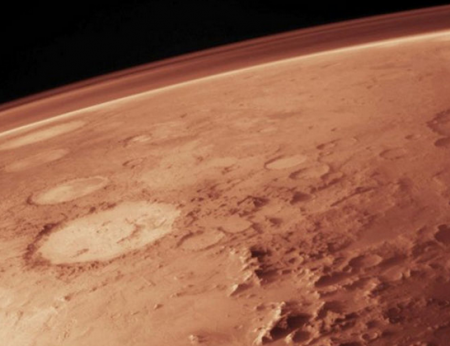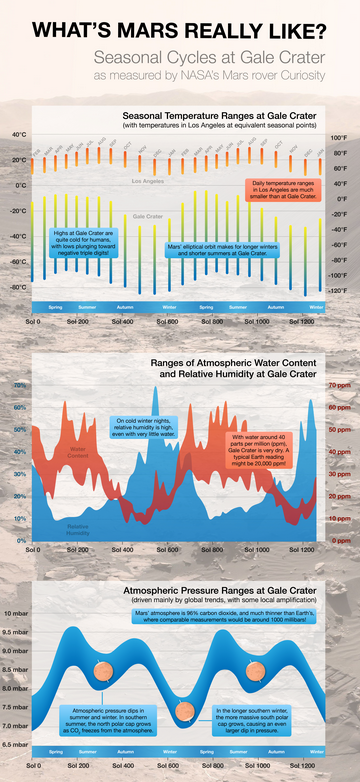May 16, 2016 – We all grumble about the weather here on Earth but after listening to the May 2016 Curiosity report and reading about its latest observations you have to wonder why anyone would want to go live on Mars. The Antarctic seems warm in comparison which is not saying much.
Since its arrival on Mars, Curiosity has collected more than 34 million pieces of weather data using REMS (Rover Environmental Monitoring Station). At the REMS website here on Earth you can check out the daily Curiosity weather report. Today on Sol 13338 the maximum air temperature in Celsius is expected to reach -18 (about 0 Fahrenheit). The overnight low was recorded at -75 Celsius (-103 Fahrenheit). The day will be sunny with Martian sunrise at 5:30 and sunset at 17:22. The REMS shows no wind or relative humidity data in its current measuring.
It is this precise daily accumulation of information that is giving us an accurate picture of just how different Mars is from earth. The long cold seasons on Mars, twice the length of ours here on Earth, have an enormous impact on the planet’s atmosphere. More about that later. And the more elliptical orbit than ours around the Sun puts the Southern Hemisphere in even worse shape than the North with less solar energy reaching the former during a more than 6 Earthly-month winter. Add to this an atmosphere a fraction of what ours is here on Earth and you have little in the way of heat retention.
When Elon Musk talks about Mars as humanity’s second home, a buffer to protect us from a future extinction event, it’s hard to equate with the picture Curiosity and our other Martian observation satellites and rovers have provided. This is a tough place to call a future home. To me it may make far more sense for our species in the future to inhabit space in self-contained closed system environments, or in a hollowed-out asteroid which we then fill with atmosphere and populate. The Mars of the present seems far less amenable.
To illustrate the two Martian years (almost four here on Earth) that Curiosity has resided on Mars, Jet Propulsion Laboratory in Pasadena, California, have produced an infographic that illustrates the seasonal cycles of Martian weather gathered since the rover landed. It is an eye opener to those Mars One volunteers who plan a one-way trip to become the first human colonists.
The chart appearing at the top compares temperatures at Gale Crater with those in Los Angeles, California. The range in temperature change between the two sites is easily seen with the tenuous Martian atmosphere producing enormous deltas between day and night. Not so much in Los Angeles.
The middle chart presents data collected on water vapor levels in the atmosphere. The red band shows even at its peaks that water vapor in the atmosphere is less than 1% of that found here on Earth. The blue band records relative humidity which on Mars is very low because it is so cold. During the day relative humidity approaches zero. At night during the extremes of the Martian winter it can rise higher than 60%.
The bottom chart shows atmospheric pressure variations throughout the year. There is nothing like this on Earth. We don’t get seasonal ups and downs in atmospheric pressure. We get weather systems that change barometric pressure. But on Mars CO2 freezes out of the atmosphere in the winter and gets captured in the polar ice caps creating the blue waveform seen in the chart. Just something else future Martian colonists would have to get used to on a planet far different from Earth.









